Paintings, Statues, Poems, plays, novels, and movies by or about our ancestor and his family.
Navigate this Post.
1. Books
2. Drawing/Etchings
3. Movies
4. Museum Exhibits
5. Painting/Portraits
Part 2
6. Plays
7. Poetry
8. Reenactors
9. Sculpture
10. Sermons
11. Songs
12. Stained Glass
13. Television
.
6. Plays
Stephen HOPKINS (1580 – 1644) (Wikipedia) The only Mayflower passenger who had previously been to the New World. His adventures included surviving a the Sea Venture’s 1609 shipwreck in Bermuda and working from 1610–14 in Jamestown as well as knowing the legendary Pocahontas, who married John Rolfe, a fellow Bermuda castaway. Some Shakespearean scholars believe he was the model for the rogue Stephano in the Tempest.
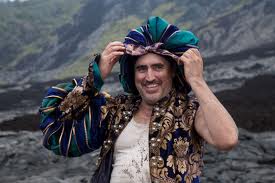
Stephen may be the real life inspiration for Stephano in the Tempest, played in the 2010 film version by Alfred Molina
The story of the Sea Venture shipwreck (and Hopkins’ mutiny) is said to be the inspiration for The Tempest by William Shakespeare. Stephen is said to be the model for the character Stephano.
William Strachey‘s A True Reportory of the Wracke and Redemption of Sir Thomas Gates, Knight, an eyewitness report of the real-life shipwreck of the Sea Venture in 1609 is considered by most critics to be one of Shakespeare’s primary sources because of certain verbal, plot and thematic similarities. Although not published until 1625, Strachey’s report, one of several describing the incident, is dated 15 July 1610, and critics say that Shakespeare must have seen it in manuscript sometime during that year.
Strachey was no stranger to the theater people who met regularly at the Mermaid Tavern, so it’s probable that Shakespeare was among those who got a preview of the work.
Several years later, the Virginia Company published a heavily sanitized version of Strachey’s A True Reportory fearing that if the public knew the truth about Jamestown, there would be no more recruits.
In the 19th century Sylvester Jourdain’s pamphlet, A Discovery of The Barmudas (1609), was proposed as that source, but this was superseded in the early 20th century by the proposal that “True Reportory” was Shakespeare’s source because of perceived parallels in language, incident, theme, and imagery.
The Tempest is believed to have been written in 1610–11, and thought by many critics to be the last play that Shakespeare wrote alone. It is set on a remote island, where Prospero, the rightful Duke of Milan, plots to restore his daughter Miranda to her rightful place using illusion and skillful manipulation. He conjures up a storm, the eponymous tempest, to lure his usurping brother Antonio and the complicit King Alonso of Naples to the island. There, his machinations bring about the revelation of Antonio’s low nature, the redemption of the King, and the marriage of Miranda to Alonso’s son, Ferdinand.
Stephano is a boisterous and often drunk butler of King Alonso. He, Trinculo and Caliban plot against Prospero. In the play, he wants to take over the island and marry Prospero’s daughter, Miranda. Caliban believes Stephano to be a god because he gave him wine to drink which Caliban believes healed him.
Stephano’s Quotes
The master, the swabber, the boatswain, and I,
The gunner, and his mate,
Lov’d Mall, Meg, and Marian, and Margery,
But none of us car’d for Kate;
For she had a tongue with a tang,
Would cry to a sailor Go hang!
She lov’d not the savour of tar nor of pitch,
Yet a tailor might scratch her where’er she did itch.
Then to sea, boys, and let her go hang!
This is a scurvy tune too; but here’s my comfort. (Drinks)
Act 2: Scene II
Caliban: Hast thou not dropp’d from heaven?
Stephano: Out o’ th’ moon, I do assure thee; I was the Man i’ th’ Moon, when time was.
Caliban: I have seen thee in her, and I do adore thee. My mistress show’d me thee, and thy dog and thy bush.
Act 2: Scene II
Flout ’em and scout ’em, and scout ’em and flout ’em;
Thought is free.
Act 3: Scene II
He that dies pays all debts.
Act 3: Scene II
Hodges writes, “To have provided some of the fabric for Shakespeare’s vision of The Tempest and to appear in the play, even in the absurd disguise as Stephano, this in itself is a kind of immortality for Stephen Hopkins.”
William TOWNE‘s daughter Rebecca Towne Nurse (Wiki) (1618 – 19 Jun 1692 [age 61] Salem MA Hanged for Witchcraft. Rebecca is a central character in Arthur Miller’s play The Crucible as well as many other dramatic treatments of the Salem Witch Trials.
In the play Rebecca Nurse, wife of Francis Nurse, is highly respected in Salem for her helpful nature. Very firm in her opinions, and willing to make any sacrifice in the cause of truth, she voices her opposition to the idea of witchcraft. Near the end, she is accused of being a witch on the prompting of the Putnams, who are jealous of her good fortune.
.
Robert GOODALE’s youngest son Jacob was born in 1642 in Salem, Mass. Jacob was killed at age 34 by Giles Cory, for whom he worked. He was beaten and died soon afterwards. The coroner’s jury said “The man was bruised to death, having clusters of blood about the heart.” Giles Cory was fined for the offense. Some of the evidence given at the time his death points to the conclusion that he was not entirely of normal mentality. At the Court session of April 1669, Robert Goodale was ordered to pay five shillings to the constable for bringing home his son.
Henry Wadsworth Longfellow (1807-1882) wrote a poem about the death and trial but used the name “Robert” instead of “Jacob” the son. Giles Cory was pressed to death at age 80 in Salem Mass., a victim of the witchcraft trails of 1692.
When Corey was accused of witchcraft with five other men years later, the murder of Jacob came back to haunt him during his trial. Refusing to plead, Corey was crushed to death when the tribunal ordered heavy stones be laid on his body.
Legend has it that the ghost of Jacob Goodale appeared to Corey from time to time, crying out about his murder. In his play “The New-England Tragedies,” Longfellow refers to the lore: “Look! Look! It is the ghost of Robert [Jacob] Goodale . . . Whom fifteen years ago this man did murder, By stomping on his body! In his shroud. . . . He comes here to bear witness to this crime.”
HATHORNE.
That is enough; we need not question further.
What answer do you make to this, Giles Corey ?MARY.
See there ! See there !HATHORNE
What is it ? I see nothing.MARY.
Look ! Look ! It is the ghost of Robert Goodell,
Whom fifteen years ago this man did murder
By stamping on his body ! In his shroud
He comes here to bear witness to the crime !The crowd shrinks back from Corey in horror.
HATHORNE.
Ghosts of the dead and voices of the living
Bear witness to your guilt, and you must die !
It might have been an easier death. Your doom
Will be on your own head, and not on ours.
Twice more will you be questioned of these things;
Twice more have room to plead or to confess.
If you are contumacious to the Court,
And if, when questioned, you refuse to answer,
Then by the Statute you will be condemned
To the peine forte et dure! To have your body
Pressed by great weights until you shall be dead !
And may the Lord have mercy on your soul!END OF ACT IV.
John PROCTOR’s son John Proctor (1632 –August 19, 1692) was a successful farmer, entrepreneur, and tavern keeper who lived far from Salem Village center, on the edge of Salem Town in what is today Peabody, Mass. He had never been directly involved in Salem Village politics or litigation with the Putnams. During the Salem Witch Trials he was accused of witchcraft, convicted and hanged.
The Crucible by Arthur Miller, a fictionalized version of the trials casts John Proctor as one of the main characters in the play. Proctor is portrayed as being in his thirties and Abigail Williams is 17 and a half years old, while the real John Proctor and Abigail Williams were respectively about sixty and eleven years old at the time of the witch trials. In the play, they had an affair, as a result of which Abigail accused Elizabeth Proctor of witchcraft.
In the play, John Proctor is a down-to-earth, forthright farmer and the play’s protagonist. He has a sexual relationship with Abigail Williams while she is a servant at his farm. Although he speaks his mind and stands up to Parris, he has no wish to be a martyr and he is careful about what he says when he senses real danger. He does show courage and boldness in his opposition to Parris and Putnam and he fiercely resists the arrest of his wife. Proctor is cautious when it comes to denouncing Abigail, particularly when his wife, claiming to be pregnant, is not in immediate danger. However, he feels he owes it to his accused friends to expose Abigail as a liar. He works hard to build a defense for those accused and manages to persuade Mary Warren to tell the truth, but this success is short-lived. As a last resort, he suffers the public shame of confessing to his adultery with Abigail to no avail. In prison, he eventually confesses so that he can live with and care for his family, but finally he decides to die rather than lose his good name and admit to witchcraft; he thus refuses to sign the paper. He does this for the sake of his children’s reputation and because Elizabeth and others have refused to confess. He will not deny himself. He has doubted his ability to be a good man so far, but with Elizabeth’s example and support he realizes he can be true to himself and accept death.
In the play, Elizabeth Proctor is accused of witchcraft, and is only saved from death due to the fact that she is pregnant. Abigail hates her for being Proctor’s wife, and for keeping Proctor’s heart. By the end of the play she feels that Proctor’s affair is due to her own faults, much to Proctor’s dismay. By the end Elizabeth chooses not to save John’s life and allows him to hang saying she would not take away his goodness.
In reality, Elizabeth Proctor was initially named by Ann Putnam on March 6, alleging that Proctor’s spectre attacked the girl. She was accused by Abigail on March 14 and further accusations were made by Mercy Lewis. Miller has Mary Warren accuse Proctor of afflicting her but this followed his initial accusation by Abigail in early April 1692. There is no historical evidence to suggest that Abigail even knew John Proctor before she accused him of witchcraft. (See 3. Movies for more details of John’s and Elizabeth’s story)
.
7. Poetry
John BROWN was born in 1589 in London, England. John owned a bakery in London and decided to come to the colonies. His assistant, James Walker came with him and brought his sister, Sarah who worked for a linen draper in Cheapside. They left England on 17 Apr 1635 the Elizabeth and arrived in Boston 2 months later. John died 28 Feb 1687 in Salem, Mass.
John built the first ‘barque’ (small boat) ever built in Hampton, New Hampshire in 1641 or 1642 at the river near Perkins Mill. It would seem that this barque was the one that John Greenleaf Whittier features in his poem, ‘The Wreck of River Mouth’.” This poem expands on the true story of a Hampton shipwreck (click for original report) from 1657, when a group of eight were killed in a sudden storm. Whittier also includes the character of another of our ancestors Rev. Stephen BATCHELDER, the founder of Hampton, NH in this poem. The Browns River is named after John. It is a 2.9 miles long river, primarily tidal, in southeastern New Hampshire and part of the largest salt marsh in New Hampshire, covering over 3,800 acres.
.
Anthony COLBY was born 8 Sep 1605 in Horbling, Lincolnshire, England. He arrived in America on the Arabella in 1630 with the Winthrop Fleet. He married Mrs. Susanna WATERMAN in 1632 in Boston, Mass. Anthony died 11 Feb 1661 in Salisbury, Essex, Mass.
The old house of Anthony Colby was on the southwest side of Main Street, which leads from Amesbury Center to the Merrimac, and was the seventh from Bartlett’s Corner. Here stands the well that was described in Whittier’s poem, “The Captain’s Well.” The well was dug by a grandson of Anthony’s daughter, Mary.
.
Albert Andriese BRADT was born 26 August 1607 in Fredrikstad, Smaalenenes (now in Østfold, Norway) a town at the mouth of the Glommen, the largest river in Norway. In the early Dutch records he is often called Albert de Noorman (the Norwegian). Albert died 7 Jun 1686 near Albany, NY.
Tawasentha was the site of a powerful waterfall where Albert Andriesen Bradt operated saw mills. The 45 mile long creek is known as Norman Kill after Albert Andriesen Bradt “de Noorman”. Normans Kill is the first tributary of the Hudson River south of the city of Albany. Albert worked a farm and these two saw mills at Bushwyck a few miles south of Albany on land he leased from Van Rensselaer and there is a record that he paid f250 annual rent for the twenty years 04 May 1652 – 04 May 1672.
Originally this Kill was called Tawasentha, meaning a place of the many dead. The Dutch appelative of Norman’s Kill is derived from Andriessen. The Vale of Tawasentha, referred to in Longfellow’s The Song of Hiawatha, is now named Normans Kill.The Dutch word “kill” means creek.
From the Vale of Tawasentha,
From the Valley of Wyoming,
From the groves of Tuscaloosa,
From the far-off Rocky Mountains,
From the Northern lakes and rivers
All the tribes beheld the signal,
Saw the distant smoke ascending,
The Pukwana of the Peace-Pipe. …“In the Vale of Tawasentha,
In the green and silent valley,
By the pleasant water-courses,
Dwelt the singer Nawadaha.
Round about the Indian village
Spread the meadows and the corn-fields,
And beyond them stood the forest,
Stood the groves of singing pine-trees,
Green in Summer, white in Winter,
Every sighing, ever singing.
“And the pleasant water-courses,
You could trace them through the valley,
By the rushing in the Spring-time,
By the alders in the Summer,
By the white fog in the Autumn,
By the black line in the Winter;
And beside them dwelt the singer,
In the Vale of Tawasentha,
In the green and silent valley.“There he sang of Hiawatha,
Sang the Song of Hiawatha,
Sang his wondrous birth and being,
How he prayed and how he fasted,
How he lived, and toiled, and suffered,
That the tribes of men might prosper,
That he might advance his people!”.
.
Susanna NORTH (Wiki) was baptized 30 Sep 1621 in Olney, Buckinghamshire, England. Her parents were Richard NORTH and Joan BARTRAM. She married George MARTIN 11 Aug 1646 in Salisbury, Essex, Mass. Susannah was executed for witchcraft on 19 Jul 1692 in Salem, Essex, Mass. Her story was told in a poem by John Greenleaf Whittier. (1807-1892.)
Whittier’s Header
Sussanna Martin, an aged woman of Amesbury, Mass., was tried and executed for the alleged crime of witchcraft. Her home was in what in now known as Pleasant Valley on the Merrimac, a little above the old Ferry way, where, tradition says, an attempt was made to assassinate Sir Edmund Andros on his way to Falmouth (afterward Portland) and Permaquid, which was frustrated by a warning timely given. Goody Martin was the only woman hanged on the north side of the Merrimac during the dreadful delusion. The aged wife of Judge Bradbury, who lived on the other side of the Powow River, was improsioned and would have been put to death but for the collapse of the hideous persecution.
The substance of the poem which follows was published under the name of “The Witch’s Daughter,” in The National Era in 1857. In 1875 my publishers desired to issue it with illustrations, and I then enlarged it and otherwise altered it to its present form. The principal addition was in the verses which constitute Part I.
.
8. Reenactors
Alexander CARPENTER’s son-in-law Samuel Fuller (1580-1633) (wiki) married Agnes Carpenter 24 April 1613 in Leyden, as his second wife. He came on the Mayflower in 1620 He was the Colony’s doctor, and was a church deacon. Samuel died in 1633 in Plymouth, Plymouth, Mass.
.
Stephen HOPKINS (1580 – 1644) (Wikipedia) The only Mayflower passenger who had previously been to the New World. His adventures included surviving a the Sea Venture’s 1609 shipwreck in Bermuda and working from 1610–14 in Jamestown as well as knowing the legendary Pocahontas, who married John Rolfe, a fellow Bermuda castaway. Some Shakespearean scholars believe he was the model for the rogue Stephano in the Tempest.
Stephen’s second wife Elizabeth Fisher was born about 1595 in England. Elizabeth died about 1643 in Plymouth, Plymouth Colony.
Constance HOPKINS (1606 – 1677) (Wikipedia) is the central character in Patricia Clapp’s young adult novel Constance: A Story of Early Plymouth. It must be a popular book as I found three different cover portraits.
The second daughter of Stephen HOPKINS (Wiki), by his first wife, Mary. Constance, at the age of fourteen, along with her father and his second wife Elizabeth (Fisher), accompanied by brother Giles, half-sister Damaris as well as two servants Edward Doty and Edward Lester were passengers on the Mayflower . Constance married Nicholas SNOW, shortly before the 1627 division of cattle.
Isaac ALLERTON’s daughter Remember Allerton was born 1614 Leyden, Holland. She married Moses Maverick 6 May 1635. Remember died 12 Sep 1652 in Marblehead, Mass.
.
Francis COOKE’s daughter Hester Cooke was born between 1618 and 1620 in Leiden, Holland. She married Richard Wright about 1644. Hester died 21 May 1669 in Plymouth Colony.
.
William BASSETT Sr. ‘s son-in-law Peregrine White (Wiki) was born 20 Nov or 19 Dec 1620 aboard the Mayflower, docked at Provincetown Harbor, Provincetown, Mass. and was He was the first English child born to the Pilgrims in the New World. His parents were William White and Susannah Fuller. He married Sarah Bassett 24 Dec 1646 in Marshfield, Plymouth, Mass. Peregrine died 20 Jul 1704 in Marshfield, Mass.
His parents named him “Peregrine”, which means: “one who journeys to foreign lands” or “pilgrim.” Soon after the landing, William died, and Susanna married Edward Winslow. Winslow adopted Peregrine and his older brother, Resolved, and made them his heirs.

Peregrine White’s Craddle — The cradle was likely of Dutch origin, and certainly in the Dutch style, and was not typical of the baby cradles and cribs of the early colonial period.
On 3 Jun 1652 Sarah’s father gave “his son-in-law Leiftenant Perigrine White” forty acres of upland with the meadow adjoining. On 16 Jun 1656 “William Bassett Senior of Duxburrow now living at Bridgewater” made a deed of gift of his Marshfield lands to his “two sons there living viz: Perigrine White and Nathaniel BASSETT.”
.
9. Sculpture
Almost everyone with European ancestors is related to everyone else within the last 2000 years. Remember the king was was ruined by his promise to pay 1 grain of rice of the first chessboard square, 2 on the second, 3 on the third …. 2^62 possible ancestors = 4,611,686,018,427,390,000. ( or 4.6 Quintillion) While Genvissa, the daughter of Claudius who married a Silurian king, was invented by Geoffrey of Monmouth (c. 1100 – c. 1155), we are all kin. We know these Romans from I Claudius and many other stories. This line has Gaelic Kings of every variety, Welsh, Irish, and Scot and famous cameos including St. Patrick, St. Columba and Macbeth.
62nd G – Marcus ANTONIUS (83 BC – 30 BC) (Wikipedia), Mark Antony was a friend, and cousin, of Gaius Julius Caesar, although after Caesar’s assassination he stopped praising Caesar. Mark Antony had a falling out with Octavian (Augustus) after the Second Triumvirate split up and he ended up in Egypt.
x
Dating at least from the Norman period, Stoke Dry Church was largely rebuilt during the 13th (west tower) and 15th centuries. Although small, the church has many interesting features – a carved Norman arch, a 15th century oak rood screen and tombs belonging to the Digby family who once lived in Stoke Dry. Of special note are the splendid medieval wall paintings which show the martyrdom of St. Edmund.
Above the north porch is the priest’s room or parvise. Reached by a narrow staircase from the north aisle of the church, it is said to be where Everard Digby planned the failed Gunpowder Plot of 1605. There is little truth in this tale however. Although Sir Everard Digby was one of the plotters he did not live at Stoke Dry at that time.
Everard “Greenleaf” DIGBY ‘s wife Agnes CLARKE was born 1419 in Stoke Dry, Rutland, England. Her parents were Francis Clarke and Agnes Flore 1st husband was Richard Seddall. (Nichols says he was 2nd husband.).

Agnes Digby — c. 1479 Slab fragment of a lady wearing a steeple headdress -lost Inscription is recorded as
‘Hic jacent Ricardus Digbi & Agnes uxor ejus qui quidem Ricardus obiit xvii° die mensis Octobris & Agnes obiit penultimo die mensis Octobris A° Domini m . . . ccc . . . septuagesimo nono, quorum animabus propicietur Deus Amen’
Here lies Richard Digby and Agnes his wife which Richard died in the eighteenth day of October, Agnes, died on the last day of the month of October A °. . . Three hundred. . . seventy-nine, whose souls may God bless you ‘.
Everard DIGBY Esquire. was born 1440 in Stoke Dry, Rutland, England. He married 1463 in Stoke Dry, Rutland, England to Jacquetta ELLIS Everard died Feb 1510 in Tilton, Stoke Dry, Rutland, England..

St Andrew’s Stoke Dry Rutland — Here lies Everard Digby, Lord of Tilton and Stoke Dry who died 21st January 1510. May God protect his soul
Jacquetta ELLIS was born 1445 in Combe Raleigh, Devon, England. Her parents were Sir John ELLIS (1430 in Devon) and Eleanor RUSSELL (b: 1432). She died 1483 in Stoke Dry, Rutland, England.
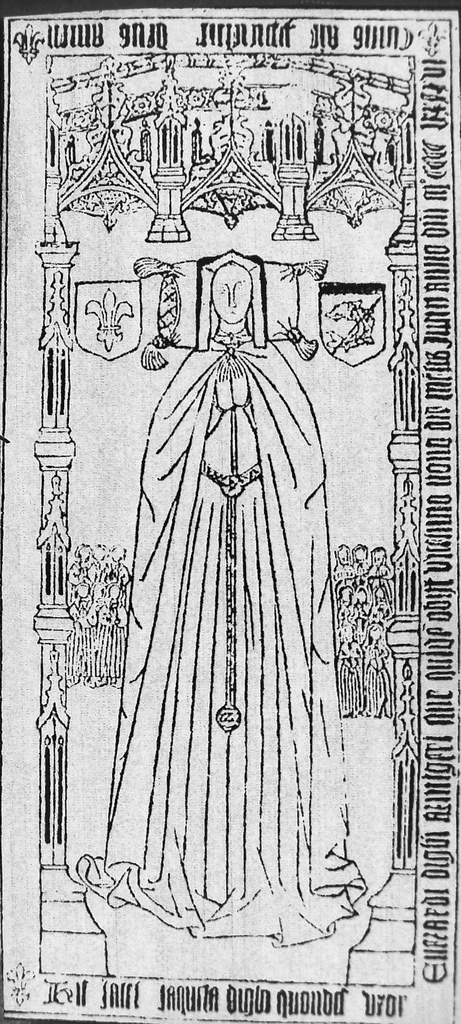
St Andrew’s Stoke Dry Rutland — 1497 Jaquetta daughter of Str John Ellis with her 14 children, she was the wife of Everard Digby 1510 who is buried at Tilton
.
Sir Thomas BROMLEY (1530 – 11 April 1587) (Wikipedia) was a English lord chancellor during the turbulent reign of Elizabeth I and prosecuted famous cases against the Duke of Norfolk and Mary Queen of Scots. He married Elizabeth, daughter of Sir Adrian Fortescue, K.B., and by her had four sons and four daughters. His daughter Elizabeth married Sir Oliver CROMWELL (1563 – 1658)
.
Francis MARBURY’s daughter Anne Hutchinson (1591–1643) was one of the most prominent women in colonial America, noted for her strong religious convictions, and for her stand against the staunch religious orthodoxy of 17th century Massachusetts. She was a Puritan whose religious ideas were at odds with the established Puritan clergy in the Boston area, and her popularity and charisma created a schism in the Boston church which threatened to destroy the Puritans’ religious experiment in New England. Creating the most challenging situation for the ruling magistrates and ministers during her first three years in Boston, she was eventually tried and convicted, then banished from the Massachusetts Bay Colony with many of her followers.
Anne Hutchinson figures prominently in an excellent book , The Wordy Shipmates by Sarah Vowell.
Anne is a key figure in the study of the development of religious freedom in England’s American colonies and the history of women in ministry. She challenged the authority of the ministers, exposing the subordination of women in the culture of colonial Massachusetts. Although her religious ideas remain controversial, her implicit rejection of state authority to prescribe specific religious rites and interpretations, was later enshrined in the American Constitution. The State of Massachusetts honors her with a State House monument calling her a “courageous exponent of civil liberty and religious toleration.”
.
Maj. John MASON (1600 – 1672) was the commanding officer in the Pequot War.
At the time, he was a victorious hero who later became Deputy Governor of Connecticut and founded Norwich, Connecticut. Now, he is viewed by some as a war criminal due to his responsible for the Mystic Massacre. He was Alex’s 10th great grandfather, one of 2,048 in this generation of the Miner line.
A statue of Major John Mason is on the Palisado Green in Windsor, Connecticut . The John Mason statue was originally placed at the intersection of Pequot Avenue and Clift Street in Mystic, Connecticut, near what was thought to be one of the original Pequot forts.
The statue remained there for 103 years. After studying the sensitivity and appropriateness of the statue’s location near the historic massacre of Pequot people, a commission chartered by Groton, Connecticut voted to have it relocated. The State in 1993 relocated the statue to its current setting.
See my post John Mason’s Controversial Statue for more of this story.
.
Mary ALLERTON was born in Jun 1616 in Leyden, Holland. Her parents were Isaac ALLERTON and Mary NORRIS. She married Thomas CUSHMAN Sr. When Mary died on 28 Nov 1699 in Plymouth, Mass, she was the last survivor of the Mayflower. (Wikipedia) She arrived at Plymouth on the Mayflower when she was about four years old and lived there her entire life; she died aged 83.
.
Isaac ESTEY’s wife Mary TOWNE (1634-1692) one of eight children, she and her family moved to America around 1640. Mary was a victim of the Salem witch trials of 1692. Mary’s sisters, Rebecca Nurse and Sarah Cloyce, were also accused of witchcraft; Rebecca was executed, but Sarah was not. Mary was tried and condemned to death on September 9 1692. She was hanged on September 22, along with Martha Corey, Ann Pudeator, Alice Parker, Mary Parker, Wilmot Redd, Margaret Scott, and Samuel Wardwell. On the gallows she prayed for an end to the witch hunt.

This statue depicts Rebecca Towne Nurse and Mary Towne Esty, wearing shackles, being under arrest for witchcraft. The statue is located in the Salem Wax Museum of Witches and Seafarers, Salem.
.
10. Sermons
Henry SCUDDER’s son Rev. Henry Scudder (1585 – 1652) graduated from Christ’s College, Cambridge, in 1606. He began a life as a Puritan minister. He first served as vicar at Drayton, Oxfordshire. Then in 1633 he became the rector of St. Andrew parish at Collingbourne-Ducis, a village on the River Bourne, near Marlborough, Wiltshire, where he served the remainder of his life. During this time, he wrote a number of devotional works, one of which, “The Christian’s Daily Walke in Holy Securitie and Peace,” was used by churchgoers for close to 200 years.
.
Robert CUSHMAN (1578 – 1625) was a Pilgrim leader and made arrangements for the Leiden congregation to immigrate to North America. He preached the first recorded sermon in the New World. (Wikipedia) (See his page for excerpts)
Oddly enough for such a religious group, there was no ordained minister among the American Pilgrims at Plymouth Colony Robert Cushman, a deacon, was the nearest thing. To settle the jealousies and animosities among the settlers, he preached a sermon on 9 Dec 1621.
Robert did not complete the initial trip to the New World with the other Pilgrims on board the Mayflower, as the ship he was travelling on, the Speedwell, developed leaks and had to return to England. He instead took a different ship to the New World.
Robert sailed to Plymouth, Massachusetts in the fall of 1621 aboard the Fortune, but returned shortly thereafter to England to promote the colony’s interests. There, he published an essay concerning the Lawfulness of Plantations, which was appended to Mourt’s Relation. This document is of interest to modern scholars because of its treatment of the economic reasons for emigration.
Unfortunately, before he could return to the New World, he succumbed to an outbreak of plague in London, in the spring of 1625; as a result, the site of his grave is unknown. The book Saints and Strangers by George F. Willison recounts his story.
.
Deacon Benjamin COLEMAN (1720 – 1797)., of Newbury, Massachusetts, fought against his slave-owning minister on the slavery issue.
“Deacon Benjamin Colman” under Rev. Moses Parsons, was suspended from his church in 1780 over slavery. He was re-instated 26 Oct 1785 after the death of Rev. Parsons. “A thorough-going abolitionist in advance of his time, brought serious charges against (Rev. Parsons) for violating the divine law and holding men and women in bondage of slavery.”
Benajmin was owner of shoe factory, a woodcarver and made calico textile prints. Calico was then rare or unknown. A home-made fabric, hand-printed was regarded as a fine article of dress and a bride decked out in such, it is said, would have successfully vied with a modern belle dressed in the most gorgeous sliks. A quantity of the wooden calico stamps, represeting fruits, flowers, vines, etc, stained with the many dyes used and bearing upon their backs, the initials “B. C.” were passed down to the 19th Century..
.
11. Songs
Thomas STRONG’s son Rev. James Strong was born 23 Aug 1618 Chardstock He first married Katherine Minterne 1640. He next married Sarah [__?__]. Aft. 1674 James died in 1694 Ruishton, Somerset, England.
James was Vicar of Chardstock (illegally in 1645, confirmed in 1654), Commonwealth era Rector of Melcombe Regis (Weymouth, Dorset) (1646), Rector of Bettiscombe, Dorset (1648), Vicar of Ilminster (1654), Vicar of Curry Rivel with Earnshill (1686)
A satirical ballad Reverend James Stronge was published about ca 1653 (Sung to Chevy Chase) See Thomas Strong’s page for the text.
.
12. Stained Glass
Thomas FITCH’s great grandparents were Thomas FITCH (1465 – 1514) & Agnes ALGER ( – 1527)

Thomas and Agnes Fitch are commemorated in a stained glass window at the Church of St. Mary the Virgin, Lindsell, Essex, England (Don’t tell anyone this might be Thomas’ son William)
Thomas died, 21 April 1514, as commemorated on a brass in the Church of St. Mary the Virgin, Lindsell. Agnes died before 3 May 1527. Beneath them on the brass are images of eleven children ~ six sons and five daughters.
On the floor before the chancel arch is a well engraved and perfectly preserved brass of the Fytch family inscribed:
“Here lie Thomas ffytch and Agnes his wife which same Thomas died the 21st day of April in the year of our Lord 1514. On whose souls may God have mercy.”
A good description of the brass is provided by Christy:
“The male figure (16 1/2 inches in height) has a half-turn to the left; is bare-headed, his long hair falling upon his shoulders; and his upraised hands, instead of being placed together as usual, are held apart. He is attired in the long gown of a civilian, beneath which his broad round-toed shoes are just apparent. It is open and turned back at the neck and down the front, showing the lining of the fur, which is also apparent at the wrists, where the extremely wide, open sleeves are turned back into cuffs. The female figure (16 1/2 inches in height) has a half-turn to the right, and the hands are placed together. Her long gown, cut low at the neck, fur-trimmed at the bottom, and having tight sleeves, turned back at the wrists into broad cuffs, which are fur covered, is loosely confined at the waist by a girdle, of which the ornamentally embroidered end falls nearly to the ground. She wears the pedimental head-dress.
The six sons (about 4 3/4 inches in height) are placed beneath their father,
while the five daughters (about 4 1/2 inches in height) are placed beneath their mother.
The former have a half-turn to the left: the latter, to the right. Both wear costumes almost exactly similar to those of their parents, except that the gowns of the sons lack fur trimming, while the costumes of the daughters lack both fur trimming and the ceinture, and their head-dresses, having no backs, allow their long hair to fall down their backs to far below the level of the waist.” The inscription (on a plate 17 by 2 1/2 inches) immediately below the principal figure reads: Translated: Here lies Thomas Fytche and Agnes his wife, which same Thomas died the twenty-first day of April, in the year of our Lord 1514; on whose souls may God have mercy.”
Thomas and Agnes are also commemorated in a stained glass window in the same church. This window, and a second showing their son William and his first wife, Elizabeth, were probably paid for by William, who had the advowson of the church (the right to be the patron of the church and to recommend its clergyman) from King Henry VIII.
Except for Thomas’ and Agnes’ second son, William, who prospered and had three knighted descendants, the other children were somewhat less prosperous. According to Wagner, By the early seventeenth century they had included apothecaries, clothiers and cloth makers [like our Thomas], staplers and leather sellers, several clergymen and a naval surgeon.
.
Ezekiel Rogers (1588-1661) (wiki) was an English nonconformist clergyman, and Puritan settler of Massachusetts. Of the 20 Yorkshire families that accompanied him from Rowley, Yorkshire and Rowley, Massachusetts, almost half were our direct ancestors. We’re here in part because he didn’t like the Book of Sports. What would he have thought of 10am start times for NFL football on the West Coast?
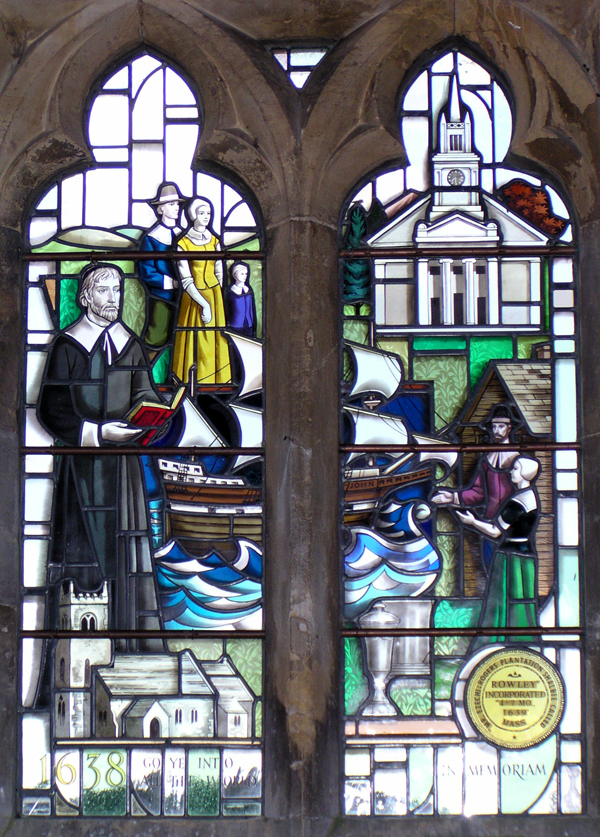
Ezekiel Rogers, St. Peter’s Church Rowley, England — The village of Rowley Yorkshire and town of Rowley Massachusetts enjoy close relations today. In 1994 the people of Rowley, Mass. gave to the church of St. Peter’s in Rowley Yorkshire. this stained glass window to honor the memory of their founder.
.
13. Televison
Elizabeth COOKE was born on 2 July 1568 at Pemmersley, Essex, England. She first married Col. Edmund READE in 1594 at Pebmarsh, Essex, England. After Edmund died, she married Rev. Hugh Peters about 1625 in England. Elizabeth died in 1637 in Wickford, Essex, England.
Rev. Hugh Peters (Wiki) (1598 – 1660) was educated at Cambridge and became a devout Puritan around 1620. Under the patronage of the Earl of Warwick, he became curate at Rayleigh in Essex. Around 1625, Peter married Elizabeth READE, a widow much older than himself, with adult children. Peter also preached regularly at the church of St Sepulchre in London, but had his license to preach revoked and was imprisoned for six months after leading his congregation in praying for Queen Henrietta Maria to forsake her idolatrous Catholicism. He moved to the Netherlands and in 1633 became a pastor at Rotterdam until pressure was put upon the English churches in the Netherlands to conform to the doctrines espoused by Archbishop Laud.
In July 1635, Peter and Elizabeth accompanied Sir Henry Vane to New England, along with his stepdaughter Elizabeth and her new husband John Winthrop (1606-76). Peter became minister at Salem, Massachusetts, in December 1636. Although he became involved in religious disputes against Vane, Peter proved to be a popular minister. He was involved in the civil administration of Salem and became one of the first governors of Harvard College. He took a leading part in the affairs of the colony, and interested himself in the founding of the new colony in Connecticut.
After Elizabeth died, he returned to England in 1641 as an agent of the Massachusetts government, but became active in supporting Parliament against the King. Peter was a chaplain in the Earl of Essex’s army. His preaching inspired the soldiers and drew many recruits to the cause. Peter frequently acted as an Army spokesman at Westminster both in delivering reports and in requesting money or aid. Peter intended returning to America with the ending of the First Civil War, but he became involved in the struggle between the Army and the Presbyterians in 1647. He championed the Independents in the Army and supported the soldiers’ refusal to disband. During the Second Civil War, he accompanied Cromwell on his campaign in Wales and at the battle of Preston.
Peter was one of the few clergymen to support the Army’s occupation of London and Pride’s Purge, which led to the trial and execution of King Charles in 1649. He fell ill and did not attend the execution but his absence resulted in a persistent rumour that he was the masked executioner who had beheaded the King.
Peter remained active in public affairs throughout the Commonwealth. He was appointed chaplain to the Council of State in 1650 and had influence on various committees concerned with religious, legal and social reform. Hugh eventually became Cromwell’s chaplain. Despite his misgivings regarding the establishment of the Protectorate, Peter remained loyal to Cromwell. His participation in affairs of state declined during the 1650s, partly due to ill health. Peter’s last great public act was to preach Oliver Cromwell’s funeral sermon in November 1658 on the text Joshua 1:2, “Moses my servant is dead”.
Although he had played no direct role in the trial and execution of King Charles I, Peter’s reputation and strong association with the Cromwellian régime resulted in his arrest at the Restoration on charges of treason. Almost universally reviled, he was hanged, drawn and quartered at Charing Cross on 16 October 1660. He behaved with great fortitude, and was undismayed by the mangling of the body of John Cook, his fellow sufferer, upon which he was forced to look.
During his final imprisonment, he wrote A Dying Father’s Last Legacy to an Onely Child to his only child, Elizabeth, who had visited him every day in prison, in which he gave a narrative of his career.
Hugh was the subject of a 1981 television play A Last Visitor for Mr. Hugh Peter. It showed him the night before his execution, where he is visited by various figures from his past and the future. Hugh was played by Peter Vaughan who at the age of 89 plays Maester Aemon in HBO’s Game of Thrones. Read more about Hugh Peters,”the most slandered man of his time”, here in Eccentric Preachers.
.
Isaac ESTEY’s wife Mary TOWNE (1634-1692) one of eight children, she and her family moved to America around 1640. Mary was a victim of the Salem witch trials of 1692. Mary’s sisters, Rebecca Nurse and Sarah Cloyce, were also accused of witchcraft; Rebecca was executed, but Sarah was not. Mary was tried and condemned to death on September 9 1692. She was hanged on September 22, along with Martha Corey, Ann Pudeator, Alice Parker, Mary Parker, Wilmot Redd, Margaret Scott, and Samuel Wardwell. On the gallows she prayed for an end to the witch hunt.
Robert Calef, in More Wonders of the Invisible World, described Eastey’s parting words to her family “as serious, religious, distinct, and affectionate as could be expressed, drawing tears from the eyes of almost all present.” See Isaac ESTEY’s page for the text of Mary’s petition to the judges.
This clip from the 1985 PBS American Playhouse movie, Three Sovereigns For Sarah shows Kim Hunter who played Mary ESTEY reciting the petition. Vanessa Redgrave played Sarah Cloyse.
William TOWNE‘s daughter Rebecca Towne Nurse (Wiki) (1618 – 19 Jun 1692 [age 61] Salem MA Hanged for Witchcraft. Rebecca is a central character in many dramatic treatments of the Salem Witch Trials.
The Hanging Tree of Sarah Good and Rebecca Nurse from Three Sovereigns For Sarah ., Warning: Scene of these two courageous, tragiclly poor souls is very vivid, so look away if you do not like watching a person die.

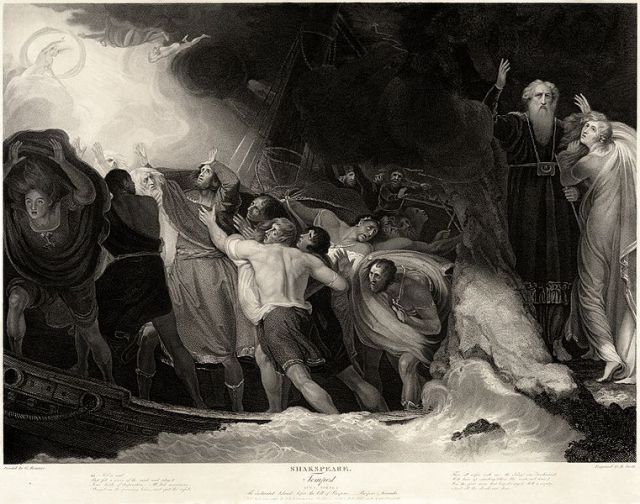

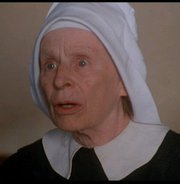

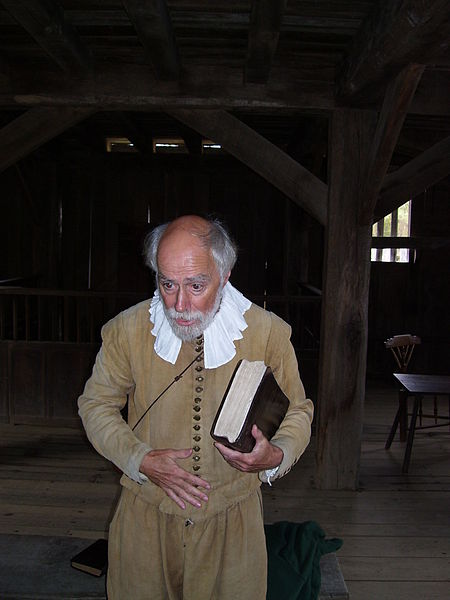
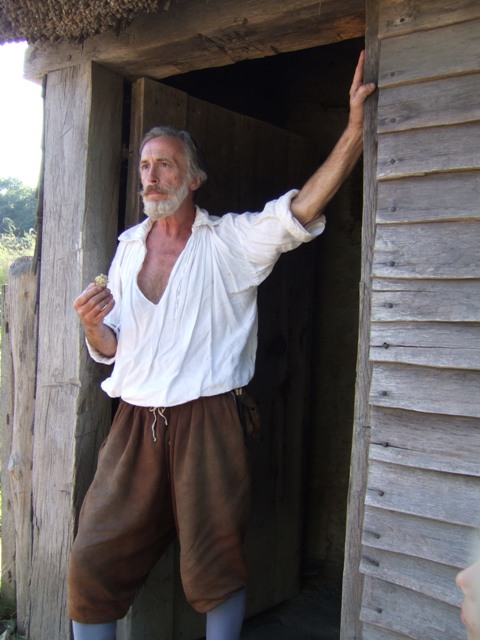
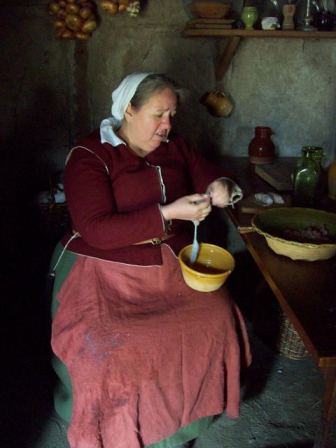
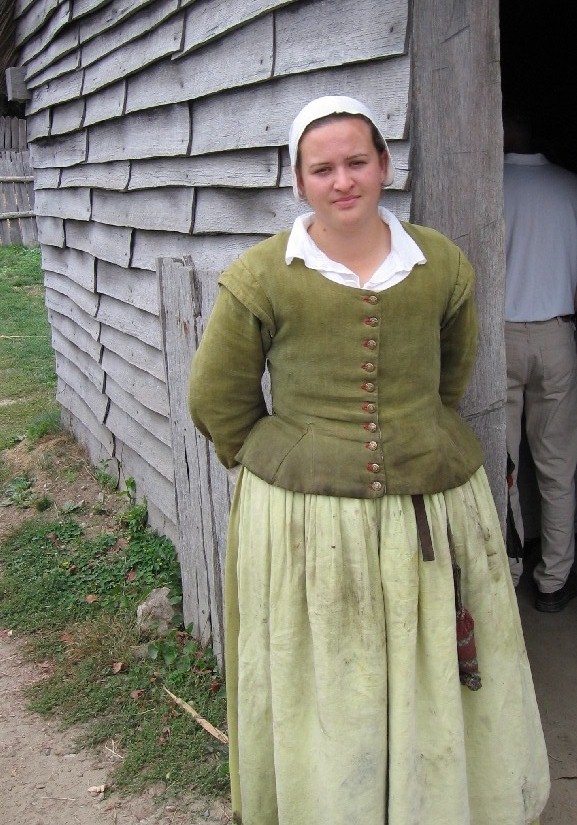
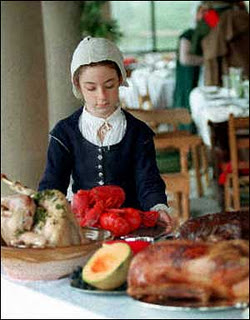

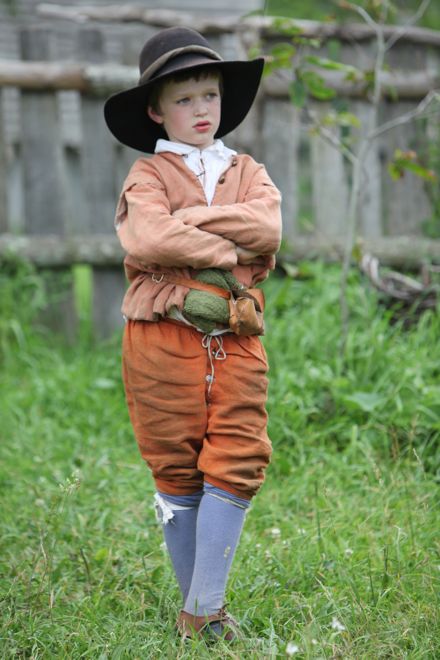


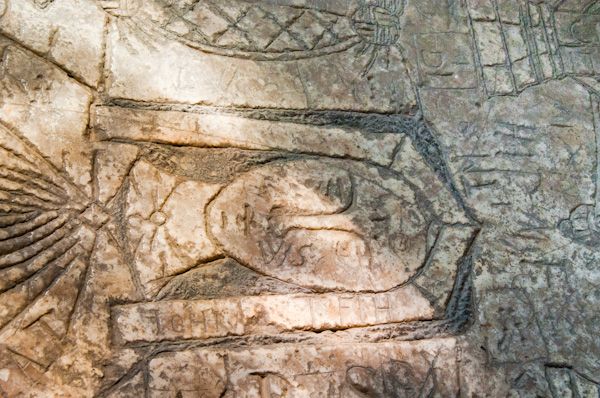
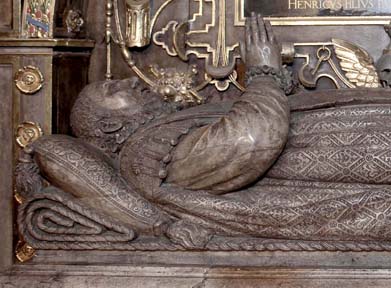


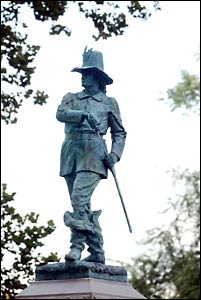
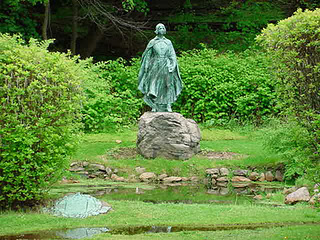
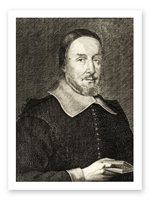
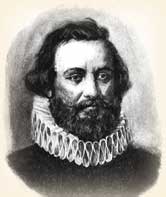
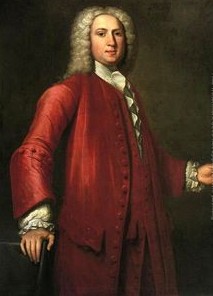



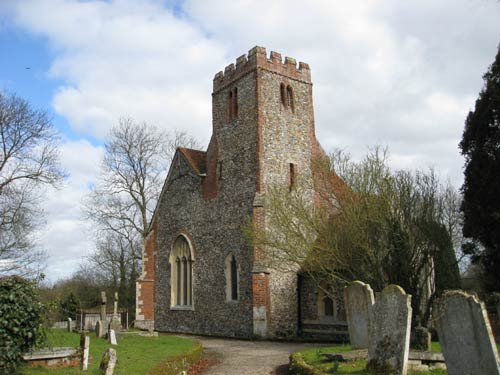
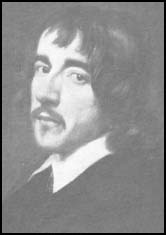
Pingback: Artistic Works and Representation 1 | Miner Descent
Pingback: Favorite Posts 2012 | Miner Descent
Pingback: Favorite Posts 2013 | Miner Descent
Pingback: George Downing | Miner Descent